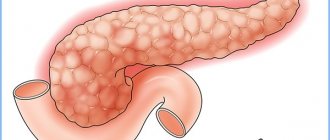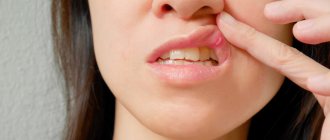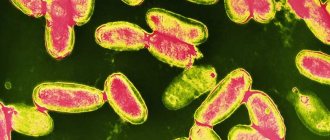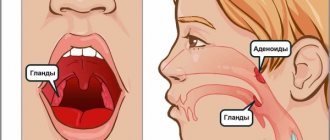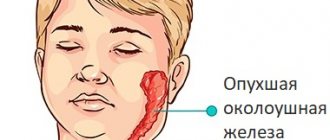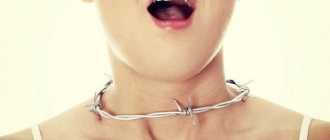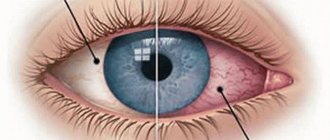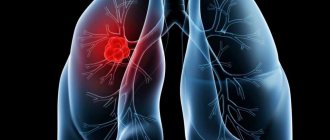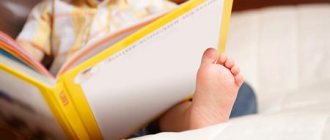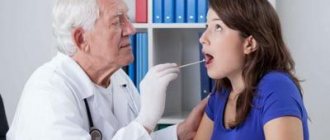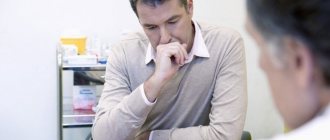What is chronic cholecystitis in adults and children, is treatment possible? Cholecystitis (from the Greek cholé - bile and kýstis - bladder) is an inflammation of the gallbladder of an acute or chronic nature, in 95% of cases it is a complication of cholelithiasis (cholelithiasis).
Inflammation changes the condition of the bladder wall and the properties of bile.
The acute process is the prerogative of surgeons, the chronic process is the prerogative of therapists.
Cholecystitis in adults is the second most common disease after pancreatitis.
Every fifth inhabitant of the earth has it. The lowest incidence rates were observed in China and Japan; this may be due to their diet.
Women get sick 5-6 times more often than men, usually after 45 years. Every year the number of cases grows by 15%.
Patients with cholecystitis most often already have gastrointestinal pathologies (gastritis, pancreatitis, hepatitis); they often suffer from increased weight, have an addiction to fried foods and overeating.
In addition, patients are often constipated and have reduced immunity.
What you need to know about bile
The gallbladder plays a very important role in the functioning of the human body. Bile is produced by the liver continuously, with a total volume of one and a half to two liters daily. Part of it enters the intestines, and the rest enters the gallbladder, which plays the role of a kind of reservoir, accumulating bile and consuming it as the body needs.
The need for bile arises for:
- intestinal digestion, where food enters after exposure to gastric juices,
- stimulation of intestinal function,
- activation of digestive enzymes,
- production of mucus that protects the intestines from mechanical damage,
- neutralize bad cholesterol.
Violation of any of the above points leads to the appearance of characteristic signs of cholecystitis.
Gallbladder tubing
The tube is used to wash and empty the gallbladder, during which the organ’s functioning is stimulated.
It is produced with and without a probe (blind tube).
- The procedure is carried out for 2-4 months once a week, and can be regarded as a medicine.
Probe method - a probe is inserted through the mouth, bile is removed through it, and the bladder is washed.
Blind tubage of the gallbladder
- In the morning on an empty stomach, drink 1-2 glasses of choleretic herbs and mineral water;
- then for 1.5 hours the person lies on the right side, bending his knees and applying a warm heating pad to the right hypochondrium.
If the result is good, then the bile passes through the stool, turning it green.
Tubage is not performed for cholelithiasis or exacerbations of gastrointestinal pathologies.
In case of chronic cholecystitis, treatment with mineral water is not prohibited: warm mineral water “washes” and frees the bile ducts, promotes the outflow of bile, reduces pain and relieves tension from inflamed organs: “Essentuki” No. 4 and No. 17, “Smirnovskaya”, “Slavyanovskaya”.
The main symptoms of cholecystitis in men
The main manifestation of cholecystitis is pain. The pain occurs sharply, its focus is localized just below the ribs. At first, attacks of pain pass quickly enough on their own and are easily relieved with painkillers.
But as the disease develops, the condition worsens sharply, the temperature rises, nausea occurs, the patient vomits, stools are disrupted, the pulse quickens, sometimes reaching 120-130 beats per minute, and other phenomena characteristic of inflammatory processes appear. The pain goes from intermittent to constant.
Due to the fact that the normal outflow of bile is disrupted, the patient's skin, whites of the eyes and mucous membranes acquire a characteristic icteric tint.
If cholecystitis takes a chronic form, then the symptoms become less pronounced until the next exacerbation occurs.
Symptoms of cholecystitis play an important role in drawing up the clinical picture, examining and examining the patient.
Identifying symptoms includes the following methods:
- anamnesis collection. This is based on a patient interview. The doctor studies the diseases that the person previously suffered from, their nature and effect on the liver and gastrointestinal tract,
- visual inspection. Signs of pathology make themselves felt by a coated tongue, increased pain on palpation (Keur's symptom). The projection point of the gallbladder is examined,
- lab tests,
- instrumental research. Most often this is an ultrasound.
Diagnosis of cholecystitis
Diagnosis of cholecystitis is carried out by a specialist, first of all, by interviewing the patient and getting to know his medical history. Analysis of the history and clinical course of the disease provides the necessary information for subsequent studies. Next, the patient is prescribed a special research method that is used for cholecystitis - duodenal intubation . This method is used in the morning, because it is important to conduct such a study on an empty stomach.
In addition, a patient with suspected cholecystitis undergoes cholecystography and ultrasound examination if necessary. biochemical blood tests are also performed .
It is also important to conduct a thorough bacteriological examination (for this, bile culture is performed). This is especially important if the patient has reduced acid-forming function of the stomach. In the process of diagnosing cholecystitis, the physicochemical properties of bile should be determined.
It is important to differentiate the chronic form of the disease from chronic cholangitis and cholelithiasis .
Nausea with cholecystitis
Nausea is an invariable companion of cholecystitis. However, this symptom occurs very often in other diseases and intoxication of the body. Therefore, it is impossible to talk about a clear connection between nausea and cholecystitis.
When interviewing a patient who complains of nausea, the doctor finds out the following key points:
- at what time of the day or night does nausea occur most?
- is it related to food intake and how long after eating does the patient feel most nauseous?
- whether the smell from the mouth has become unpleasant, what is the nature of the odorous deposits on the mucous membranes,
- how long does nausea last with cholecystitis and is there any vomiting,
- if vomiting is present, does the patient feel relief after it,
- The composition of the vomit itself, the state of digestion of food, blood clots, mucus, etc. are also important.
- what is the nature of the patient's stool?
Treatment of cholecystitis in adults with folk remedies
Treatment of cholecystitis with herbal medicine is always agreed with the doctor and is used quite widely.
Herbs used include burdock, immortelle, corn silk, tansy, peppermint, and rose hips.
All these herbs are good for cholecystitis, since they have an anti-inflammatory effect, dilute bile and increase its secretion, and are used during remission for a month.
Herbs for chronic cholecystitis can be combined, but the collection should not contain more than 5 items.
Traditional medicine has a good understanding of what cholecystitis is and how to treat it; This explains such a large selection of herbs for different forms and conditions of cholecystitis.
Choleretic plants: peppermint, corn silk, immortelle flowers, barberry, centaury, burdock, tansy.
Cholekinetic plants: calendula, lavender, lemon balm, immortelle, flowers of blue cornflower, hawthorn, smokeweed, rosehip, dill seed, caraway, dandelion root, valerian, chicory.
All solutions should be prepared for only 2-3 days so that they are fresh. They need to be taken for 2-3 months.
Symptoms of acute cholecystitis
There are a number of signs by which, with a high degree of probability, anyone can identify acute cholecystitis, even without special medical education.
Thus, a characteristic reaction is severe pain and nausea, the urge to vomit, which occurs a short time after a meal with a large amount of fatty foods. The pharmaceutical industry produces a number of drugs, some of which are advertised daily on TV. They help relieve such symptoms quite well, but they do not affect the root causes of the disease in any way and it continues to progress.
The pain occurs because the bile ducts are blocked.
Other symptoms of acute cholecystitis include:
- high temperature, the patient is febrile,
- weight loss,
- the liver increases in size, which is clearly felt when palpating the right hypochondrium,
- bad breath.
Complications of cholecystitis
Any form of cholecystitis can lead to complications.
Among them, the most common are the following:
- empyema of the gallbladder (this is the name for the accumulation of a large volume of pus inside the bladder with obstruction of its ducts, i.e. the pus does not have access to the outside);
- gangrene of the walls of the bladder with complete necrosis of all its tissues due to the pressure of the stones;
- perforation of the walls for the same reasons;
- with perforation, peritonitis necessarily develops and sepsis may occur; in addition, fistulas can form due to inflammation between the walls of the bladder and the stomach, kidney, and intestines;
- due to prolonged inflammation, connective fibrous tissue develops and adhesions occur;
- the gallbladder may simply stop working (“switched off bladder”);
- inflammation of surrounding tissues and neighboring organs may develop - pericholecystitis;
- inflammation of the walls of the bile ducts passing inside and outside the liver; it can also form duodenitis - long-term inflammation of the duodenum;
- the appearance of chronic pancreatitis;
- impregnation of the bladder walls with calcium salts, which is why it acquires a light color on radiography (“porcelain bubble”);
- calcium salts precipitate, calcium-milk bile itself does not cause harm, but if the bladder swells, this becomes a reason for its complete removal;
- formation of subhepatic abscess;
- obstructive jaundice;
- acute pancreatitis;
- secondary liver cirrhosis;
- gallbladder carcinoma.
Pain with cholecystitis
The nature of the pain and its location are the same in all patients.
Discomfort and pain syndrome manifest themselves:
- on the right side of the abdomen at the lower rib,
- the area of the stomach at the xiphoid process,
- navel area.
Pain with cholecystitis can be of various types and can be sharp, burning, stabbing, etc. It intensifies significantly with palpation and tapping on the right lower rib (projection point of the gallbladder - Ker's symptom).
Causes
Typically, inflammation of the gallbladder occurs due to infection of the organ by pathogenic microorganisms. All this occurs against the background of weakened immunity and the presence of underlying diseases. The hereditary factor plays a significant role in this.
The causes of inflammation are:
- infection by parasites, helminthic infestations – opisthorchiasis, giardiasis;
- hepatitis virus infection;
- entry into the gallbladder of staphylococcus and streptococcus bacteria;
- fungal infection;
- intoxication;
- prolonged exposure to allergens.
The onset of an active inflammatory process is influenced by the following factors:
- stagnation of bile due to dyskinesia or blockage of the biliary tract;
- endocrine disorders;
- acute infectious processes;
- physical inactivity, obesity;
- prolapse of the digestive tract;
- pregnancy;
- poor nutrition;
- constant consumption of alcoholic beverages, smoking;
- regular exposure to traumatic situations.
If we talk about the development of cholecystitis in children, the factors that provoke this condition may be:
- obesity due to a sedentary lifestyle;
- hereditary predisposition;
- poor immunity;
- injuries;
- developmental anomalies.
Symptoms of the chronic form
Has a sluggish character. Its main symptoms may not be pronounced.
Symptoms of chronic cholecystitis are:
- discomfort and heaviness in the abdomen,
- weak point of the gallbladder projection,
- yellowish skin,
- with cholecystitis, constipation is a common manifestation,
- wave-like attacks of nausea,
- bloating,
- there is a feeling of bitterness in the mouth,
- the temperature is slightly elevated,
- increased liver size.
- bad breath.
The pain is not severe or does not appear at all.
Treatment
Therapy for chronic cholecystitis largely depends on its form. It is selected in accordance with the patient’s age, the form of the pathology and the severity of the inflammatory process.
- Drug therapy. Aimed at alleviating the patient’s condition and eliminating symptoms. Treatment of chronic cholecystitis with medications includes the prescription of antibiotics, choleretic agents and antispasmodics. Drug dissolution of stones is also practiced, but it is carried out only under certain conditions. The size of the stone should not exceed 5 mm, and its age should not be 3 years. Education should include cholesterol. The course can last more than a year.
- Surgery. It involves removing the gallbladder. It can be performed either in a standard way (abdominal surgery) or by laparoscopy.
- Proper nutrition. Diet for chronic cholecystitis is of great importance. During the period of exacerbation, it is advisable to only drink liquids for the first few days. Then pureed food, low-fat cottage cheese and low-fat varieties of fish are gradually introduced. After the condition has normalized, diet No. 5 is prescribed, which involves low-calorie foods high in fiber and low in proteins and fats. The diet for chronic cholecystitis consists of small meals (5-6 times a day) with a drinking regime (at least 1.5 liters of water per day).
Symptoms of calculous cholecystitis
Calculous cholecystitis, often called stone cholecystitis, occurs due to irritation of the lining of the gallbladder and its stretching. A photo, or rather an x-ray, can show the location and size of stones and a decrease in the lumen of the biliary tract. The etiopathogenesis of stone formation has been well studied.
The symptoms of this disease are directly related to cholelithiasis (cholelithiasis) and injury to the mucous membranes with their subsequent inflammation and swelling.
The following periods are typical:
- exacerbation.
Severe symptoms with acute pain, manifestations of infectious damage to the body, - remission
. It is often called a period of calm, when discomfort, pain and other symptoms subside, and bile begins to flow into the intestines before the next exacerbation of cholelithiasis.
Common symptoms of calculous cholecystitis include:
- feeling of heaviness under the ribs,
- Ker's sign,
- symptoms of gallbladder inflammation,
- negative reaction of the body to fatty foods,
- feeling of bitterness in the mouth,
- bitter taste in the mouth,
- yellow coating on the tongue and mucous membranes of the mouth,
- bad breath,
- heartburn,
- diarrhea,
- constipation.
Treatment of cholecystitis
Treatment of chronic cholecystitis in adults begins with a correct and accurate diagnosis.
Complexity includes conservative therapy and surgical intervention.
The treatment regimen for chronic cholecystitis with a conservative method involves prescribing:
- antispasmodics;
- NSAIDs (Diclofenac, Meperidine, Indomethacin);
- choleretic drugs, hepatoprotectors;
- drugs for the treatment of biliary dyskinesia;
- diet therapy.
Symptoms and treatment are always interconnected. For severe pain, analgesics are prescribed - Analgin, Baralgin, Pentalgin, Ketonal (tablets and injections).
If the diagnosis of the infectious nature of cholecystitis is confirmed, antibacterial therapy is immediately prescribed.
- when choosing an antibiotic, its ability to concentrate in bile is taken into account;
- in this case, penicillin drugs are suitable - Oxacillin, Ampicillin;
- Fluoroquinolones, macrolides, tetracyclines, Erythromycin, etc. are also popular.
To eliminate dyskinesias, anticholinergic drugs (Riabal) and antispasmodics are prescribed - No-shpa, Odeston, Duspatalin, Papaverine, Platyfillin, Mebeverine, Halidor, etc.
If we are talking about acalculous cholecystitis, in a state of remission for various types of dyskinesias, drugs are prescribed that affect the production and secretion of bile.
Stimulate bile formation by Cholenzym, Allochol, LIV-52, Silimar, Decholin, herbal medicine, Holosas, mineral waters without gas, etc.
Conservative treatment is not complete without cholekinetics to stimulate bile excretion: xylitol, Carlsbad salt, magnesia, sorbitol, rovachol.
Chronic acalculous cholecystitis: the treatment of this condition is no different from the general one, the only difference is that litholytics are not used.
Tubage is often carried out - (washing) the bladder and its ducts according to the scheme, drinking mineral water without gas and taking xylitol or sorbitol. The dosage regimen depends on the instructions of the attending physician.
In case of hypotension of the bladder, it is possible to prescribe Ursodez, Oxafenamide, hepatoprotectors - Chofitol, Karsil, Essentiale, Gepabene.
The drugs are taken for a long time - up to 1-3 months according to the regimen.
Recently, litholytics have gained popularity: derivatives of ursodeoxycholic acid - Ursosan, Exchol, Ursofalk, etc.
Symptoms of cholecystitis according to the forms of cholelithiasis
Latent form
. The absence of symptoms in latent gallstone disease is explained by the fact that the stones have a small diameter (up to several millimeters) and until a certain time do not injure the walls of the gallbladder and do not clog the ducts.
Dyspeptic form.
The pathogenesis has not been precisely studied. Characterized by dull and aching pain under the ribs on the right and in the epigastric region. Symptoms occur due to the fact that bile stops flowing into the small intestine.
Torpidnaya.
This form usually occurs after a series of severe attacks of cholecystitis and is characterized by a sharp dulling of sensitivity due to the fact that the patient’s nervous system is completely exhausted.
Shock form
characteristic of complete obstruction of the ducts and hepatic colic. The patient feels severe pain and chills, and the heart rate increases significantly.
Causes of cholecystitis
The main cause of cholecystitis lies:
- in the penetration of infection (staphylo-, streptococci, E. coli) from the liver, duodenum, intestines;
- due to periodontal disease, tonsillitis, pyelonephritis, etc. - via the lymphogenous, hematogenous and ascending route;
- the presence of Giardia, Ascaris, liver fluke.
In addition, the cause may be biliary dyskinesia, when cholestasis develops and stones form, which constantly injure the walls of the bladder and cause exacerbations of chronic cholecystitis.
Power supply errors:
- leaning on fatty and fried foods, breaks in eating for more than 3 hours;
- dry food, alcohol;
- stress and overexertion;
- reflux esophagitis;
- congenital anomalies of the bladder itself;
- prolapse of abdominal organs;
- some medications, when taken for a long time, contribute to cholelithiasis: Cyclosporine, Clofibrate, Octreotide;
- obesity or sudden weight loss;
- SD;
- physical inactivity.
It has been noticed that it is the stones that cause inflammation of the bladder; Without them, even in the presence of infection, cholecystitis rarely develops.
There is also no inflammation if the motor activity of the gallbladder is normal.
The cause of the chronic process in the bladder is the presence of other gastrointestinal problems in the form of pancreatitis and infections of the upper gastrointestinal tract.
Often, cholecystitis in adults first manifests itself during pregnancy: this is explained by the fact that hormonal changes lead to stagnation of bile, and in the later stages, the abdominal organs are compressed by the enlarged uterus.
Symptoms of non-calculous cholecystitis
Non-calculous cholecystitis manifests itself in disorders of blood circulation and nerve endings (innervation). It is a common companion to hepatitis and is characterized by damage to the gallbladder by infections and erosion of its mucous membranes.
Characteristic symptoms depend on the syndrome:
- Cardiological
. The pain is dull and monotonous. Appears an hour or an hour and a half after a fatty meal, physical activity, shaking when driving off-road, etc. After eating, a dull pain occurs in the heart area, and arrhythmia appears. If you take a lying position, the symptoms subside. - Esophagic.
Characterized by heartburn and a feeling of heaviness in the chest. There may be difficulty swallowing food and water. Characteristic odor from the mouth. - Intestinal
. Bloating and constipation.
Features of chronic cholecystitis in pregnant women
Exacerbation of the disease during pregnancy most often occurs in the third trimester due to active growth and increase in fetal weight. This often provokes compression of the liver and bile ducts, which leads to the development of inflammation. Cholecystitis during pregnancy requires especially careful diagnosis and treatment, since it poses a danger not only to the woman, but also to the fetus.
Signs of chronic cholecystitis depend on the form of the disease. The main symptom is pain in the right hypochondrium.
Symptoms of destructive cholecystitis
The disease occurs in a phlegmonous form, and its continuation is gangrenous, which has an unfavorable outcome for the patient.
The following signs of cholecystitis are characteristic:
- tachycardia, pulse can significantly exceed 100 beats per minute even at complete rest,
- It is visually clearly noticeable that when breathing, the left and right parts of the patient’s torso move asymmetrically. The breathing itself is shallow, it is very difficult or impossible to take a deep breath, a cough appears,
- consciousness is depressed.
What is cholecystitis
This pathology refers to gastrointestinal diseases. According to statistics, women exhibit symptoms of this pathology much more often than men. Cholecystitis usually affects adults in middle age. The gallbladder collects bile, which is synthesized by the liver. This secretion enters the duodenum through special ducts and is involved in the digestion of food.
When the sphincters and parasympathetic nervous system work correctly, bile moves in only one desired direction. Due to certain factors, the work of the sphincters becomes asynchronous, the secretion from the bladder is incompletely released, which can provoke pressure in it and cause pain. In this case, contents from the intestine can often be thrown into the ducts.
Often this content contains an infection that easily penetrates the gallbladder, causing it to become inflamed. Initially, inflammation occurs inside the organ, but later it spreads throughout the entire thickness of the bladder wall. This is how the acute form of pathology develops.
After a month or later, the walls of the gallbladder become thicker and lose their mobility. Against the background of what is happening, the outflow of bile secretions malfunctions, and the appearance of crystalline stones in the organ cannot be ruled out. Over time, the acute form of the disease can become chronic.
Consequences of inflammation
There is a category of people who do not trust their health to specialists and believe that they can overcome diseases on their own. You should understand the dangers of self-medication and delays in seeking medical help:
- The formation of foci of suppuration inside the inflamed organ.
- Formation and development of phlegmon.
- Formation of ruptures and cuts in the gallbladder.
All of the above consequences, when neglected, can lead to death.
What is inflammation of the gallbladder called?
Acute cholecystitis among doctors is called inflammation of the gallbladder, the popular name is the disease of the “holiday table”. It is during the period of feasting that a person does not monitor the quality and quantity of what he eats; on holidays there is no need to work, you can lie on the couch in front of the TV all day.
The first symptoms of a disease affecting the body may appear after a change in the opportunistic intestinal microflora . The main consequences are a decrease in general immunity, the occurrence of infections, and the formation of stones in the bladder and ducts.
Treatment can only be prescribed by a doctor, since cholecystitis has several forms: acute, chronic. Possible acalculous inflammation.
How does cholecystitis manifest?
The manifestation of symptoms depends on the form of the disease, so let’s take a closer look at how acute and chronic cholecystitis clinically manifests itself.
Symptoms of acute cholecystitis
Acute inflammation is always accompanied by severe intoxication, which causes headaches, fever, joint pain, lethargy and weakness, and sudden weight loss. Signs of inflammation of the gallbladder in the acute stage:
- paroxysmal pain in the right abdomen under the ribs. The occurrence of sharp pain is explained by obstruction of the lumen in the ducts by a clot of bile or a stone;
- weight loss, poor appetite;
- yellowness of the skin and eye sclera;
- when diagnosed at a doctor’s appointment, pain and dilation of the bile ducts are noted;
- the appearance of chills at temperatures up to 39 degrees;
- nausea and vomiting with discharge of green bile;
- frequent constipation;
- flatulence and bloating;
- The child develops irritability and aversion to fatty foods.
During exacerbations of inflammation with the formation of stones, the symptoms are severe, and dangerous complications often develop; however, treatment of the gallbladder at home is not carried out. One of these conditions can be an abscess in the liver, when an inflamed lesion with a capsule containing pus appears inside the organ.
Symptoms of cholecystitis
It is also possible to experience peritonitis, when inflammation spreads to the peritoneum, or pancreatitis with a focus of inflammation in the pancreas. Often there is infection, the development of cholangitis with inflammation of the bile excretion tract. All these symptoms imply an urgent visit to a medical institution for medical help, including treatment in a hospital.
Symptoms of chronic cholecystitis
In the chronic form of inflammation, painful spasms increase in the biliary system and gastrointestinal tract when eating food, during stressful experiences, after drinking alcohol:
- nagging pain in the right hypochondrium, possibly a burning sensation in the liver area;
- pain in the stomach, in the upper part;
- irradiation to the sacrum or lower back;
- pain in the chest in the area of the heart (cholecystocardial syndrome), with an abnormal heart rhythm. The heart is affected when the source of infection in the bladder has a toxic effect on the entire body and blood flow.
Read also:
How to treat gallbladder diseases?
Experts point to solar syndrome, which occurs when the symptoms of chronic inflammation are ignored. In this case, pain is noted near the solar plexus. Irradiation occurs in the navel, back, the intensity grows to extremely high.
General symptoms of cholecystitis
For all patients there are a number of common symptoms of gallbladder cholecystitis. In most cases, there are signs of vegetative-vascular dystonia - rapid heartbeat, tachycardia, excessive sweating, headache, loss of sleep. Of the specifically biliary manifestations that the organ is inflamed, the following symptoms are often noted:
| № | Helpful information |
| 1 | belching of air that leaves an unpleasant taste |
| 2 | there is bitterness in the mouth, especially in the morning |
| 3 | flatulence and bloating |
| 4 | failure of the digestive process, manifestations of dyspepsia - vomiting and/or nausea, constipation and diarrhea |
| 5 | itchy skin due to excess bile in the blood and bile |
| 6 | reflex vomiting that occurs after consuming fatty foods or alcohol |
Patients with allergies may experience angioedema, the most life-threatening symptom in humans. Chronic cholecystitis begins to develop in children, without showing clinical symptoms. Over time, the walls of the gallbladder thicken, severe inflammation forms, which causes such vivid symptoms.
Inflammation of the biliary organ in women
Not only are women more susceptible to gallbladder inflammation than men, but they also have several additional symptoms:
- PMS syndrome, when severe stress begins before menstruation;
- a week before the critical days, severe headaches begin;
- there are mood swings;
- pastiness in the legs and arms. The patient observes slight swelling, which causes the skin to swell and become pale, resembling raw dough.
Chronic cholecystitis always varies in its manifestations depending on the form of the disease, stage and general condition of the patient. Due to the connection of the ducts with the liver, if the bladder becomes inflamed, inflammation can often be found in the liver.
What examination should I take?
To confirm the diagnosis, it is not enough to collect a detailed medical history from the patient. It is necessary to conduct a series of studies to verify the presence of cholecystitis. The symptoms of the disease are general and indicate the presence of a disorder of the hepatobiliary system, and therefore do not apply to diagnostic criteria. During the study, the degree of damage to the organ is revealed and a suitable option is selected - how to treat inflammation of the gallbladder.
If the first signs, in addition to pain in the right hypochondrium and dyspepsia, include symptoms of fever, then this indicates acute cholecystitis. In older people, medical history is difficult, since signs of inflammation of the gallbladder often develop against the background of other diseases - pancreatitis, liver disorders.
Blood tests reveal high ESR levels, increased levels of liver enzymes, bilirubin, and leukocytes. To confirm the diagnosis, ultrasound diagnostics are performed to identify thickening of the walls or their structural changes. You can consider stones and deviations from the norm in size.
During diagnosis, the method of dynamic ultrasound is used, when the diseased organ is examined several times over a certain period. This is necessary in order to find out whether the disease is progressing, at what speed structural changes occur, and what is the speed of recovery during treatment.
If doctors do not identify the cause of the patient’s illness using ultrasound for a long period, then laparoscopy is prescribed. This is a universal and minimally invasive method that allows not only to reliably study the condition of the internal organ, but also to perform surgery during diagnosis, if necessary. Laparoscopy allows you to differentiate the diagnosis, distinguishing inflammation of the bile from an acute attack of appendicitis, pancreatitis, symptoms of urolithiasis, liver abscess, inflammation of the kidneys, stomach or duodenal ulcers.
Treatment at home
First you need to change your diet. This will be the first step towards recovery. If inflammation is severe, it is better to refrain from eating heavy food for several days, replacing it with unsweetened yoghurt, kefir, juice, and warm tea.
After a couple of days, you can add puree soup, cottage cheese and liquid porridge. You need to consume salt, sugar and seasonings as little as possible. You need to take frequent meals seriously, taking breaks of no more than 3 hours. It is better to drink water with high mineralization.
Recommended Products:
- dairy products;
- boiled poultry meat;
- vegetables and fruits;
- porridge;
- soups with vegetable broth.
Fatty sauces, meat, and alcoholic drinks should be removed for a long time. It is also necessary to set aside canned foods and foods with added spices and marinade. Anything that contains emulsifiers will only cause harm.
You may be interested in an article on the treatment of gallstones.
There is also an article about treating a kink in the gallbladder with folk remedies.
Here you can learn about ways to treat cholecystitis at home.
Dietary recommendations
Diet for inflammation of the gallbladder is an important component of the treatment process. The state of the entire biliary system largely depends on the nature of nutrition. In the first days after an exacerbation, it is recommended to fast, but you can drink sweet tea, chamomile infusion, or rosehip infusion. After relieving biliary colic, it is recommended to eat soft food, which is steamed or boiled, but in crushed form. Be sure to avoid foods that contain large amounts of fats, simple carbohydrates, and coarse fibers. All fried, smoked, spicy foods and alcoholic drinks are prohibited.
Diet rules for gallbladder inflammation:
- eat every 2-3 hours, but in small portions, avoiding overeating;
- have dinner no later than 2-3 hours before bedtime;
- the diet should be complete, varied, contain natural protein (lean meats, baked, boiled fish), complex carbohydrates (cereals);
- adherence to diet No. 5;
- the volume of liquid per day is at least 1.5-2 liters, but you should not wash down your food with water, so as not to dilute the secretions and reduce the quality of food digestion.
For non-calculous inflammation, when there are no stones in the gallbladder, but there are prerequisites for their appearance, following a diet helps a lot. It is also important to exercise regularly so as not to create new preconditions for stagnation and disruption of the outflow of bile.
Who suffers from cholecystitis?
There are a number of factors that increase the risk of developing cholecystitis. It is especially important for certain groups of people to know what chronic cholecystitis is.
- Gallstones are more likely to form in women than in men. Therefore, in the weaker half of humanity, chronic cholecystitis occurs more often.
- Changes in hormonal levels affect the composition of bile. The onset of cholecystitis in women occurs during pregnancy. Also at risk are people receiving drug treatment with hormonal drugs.
- The risk of developing chronic cholecystitis increases after 40 years of age.
- People who are obese are also at risk of developing this disease due to metabolic disorders.
- If you have diabetes, you are more likely to get cholecystitis.
If you have at least one of the listed risk factors for chronic cholecystitis, do not delay diagnosis. Be sure to get examined by a doctor.
Diagnostics
A gastroenterologist makes a preliminary diagnosis based on complaints, medical history, and clinical examination. The main difficulty in diagnosis is determining the form and nature of the pathology.
To confirm the diagnosis, you need to conduct a number of laboratory and instrumental studies:
- Blood test. If the disease is present, the analysis results reveal an acceleration of ESR and neutrophilic leukocytosis. Biochemical analysis shows an increase in the activity of liver enzymes, an increase in the level of bilirubin and C-reactive protein.
- Urine examination. The presence of bile acids in urine is detected.
- Stool analysis. It is carried out to exclude or confirm parasitic infestation.
- Duodenal sounding. Determines bile metabolism disorders. Using a probe, portions of bile are taken for examination. Indicators of the disease are changes in the color of the secretion, the presence of sediment and mucus in it. Microscopic examination may reveal microlites, leukocytes, and Giardia cysts in the bile. A biochemical analysis of bile can reveal increased levels of proteins, alkaline phosphatase, and a decrease in bilirubin concentration.
- Ultrasound of the gallbladder. Determines the size of the organ - its increase, or vice versa, decrease, thickening of the walls of the gallbladder, as well as its deformation.
To differentiate inflammation of the gallbladder from acute appendicitis, pyelonephritis, pancreatitis, peptic ulcer, additional examinations and consultations with highly specialized specialists may be necessary.
Ultrasound will help identify inflammation in the bladder
Diet
It is impossible to relieve inflammation of the gallbladder without following a gentle diet. Compliance with the principles of a healthy diet allows you to normalize the process of bile formation and the timely release of bile into the duodenum. Fractional nutrition with the consumption of small amounts of food helps to achieve this goal. If the patient eats up to 6 times a day, the gallbladder releases bile into the intestines in a timely manner, and the risk of congestion is minimized. When a person eats on the run, dry food, and the intervals between meals last more than 5-6 hours, bile accumulates and the bladder becomes inflamed.
For a disease such as cholecystitis, the diet is selected individually by a gastroenterologist, taking into account the form of inflammation of the bladder. In all cases, foods with irritating effects on the gastrointestinal tract are excluded from the diet:
- spicy and sour foods;
- food that is too hot or cold;
- dishes containing vinegar, spices;
- fatty, fried and smoked foods.
The diet of patients with cholecystitis consists of boiled, baked, stewed food. Cereals, vegetables without coarse fiber, lean meat, steamed omelettes and puddings, and low-fat dairy products are allowed. Fresh baked goods are prohibited, but you can eat white bread croutons and cereal crispbreads. Of fats, preference is given to vegetable ones, but not more than 100 g per day.
Taking large volumes of fluid for inflammation of the gall bladder is necessary. When drinking 2 liters of liquid per day, the bile dilutes and acquires optimal rheological properties, which speeds up the process of evacuation of secretions through the ducts without the risk of blockage. Recommended drinks are still mineral water, a decoction of rose hips, and sweet juices diluted 1:1 with water.
Phytotherapy
Inflammation can be treated using traditional methods. Herbal medicine allows you to speed up the recovery of the organ, relieve pain and discomfort in the problem area. But it is better to combine herbal medicine with the main drug treatment - tablets and herbs in combination give the maximum effect. Before starting to take herbal infusions, a doctor’s consultation is necessary - ill-conceived treatment with folk remedies can give a negative result.
Effective folk recipes for cholecystitis:
- With the help of infusion from corn silks, painful spasms are relieved and bile secretion is improved. To prepare, add 250 ml of boiling water to 10 g of dry stigmas and leave for an hour. Take 50 ml before meals.
- Peppermint infusion is useful for women suffering from cholecystitis due to its soothing and anti-inflammatory effect. To prepare, pour 20 g of mint leaves into a glass of boiling water and heat in a water bath for 25 minutes. Cool and drink before meals three times a day.
- Parsley infusion improves digestion and has a slight choleretic effect. Finely chopped parsley in a volume of 10 g is poured into a glass of boiling water, allowed to brew and drunk warm, 50 ml before meals.
How is cholecystitis treated?
When a patient has inflammation of the gallbladder, the doctor takes into account the symptoms, finds out the general condition, determines the location of the pain, studies the results of laboratory and instrumental examinations to prescribe effective antibacterial therapy. Treatment with antibiotics can only be prescribed by the attending physician, since you can harm the body yourself and cause side effects. Let's consider how to treat cholecystitis of the gallbladder so that complications do not arise.
Read also:
Types of lithotripsy for gallstones
Drug treatment
To relieve pain and stimulate the flow of bile from the gallbladder, treatment must be supplemented with antispasmodics. These are Drotaverine or No-shpa, Mebeverine or Papaverine, Duspatalin or Spazgan. The choice of the correct medication is made by the doctor. It also allows you to take analgesic tablets - Baralgin or Analgin. Each of them will relieve pain within 15-20 minutes. Riabal is taken as an anticholinergic. Inflammation of the gallbladder should be treated not until the pain is relieved, but until the cause is eliminated.
If the function of the liver and gall bladder decreases, the doctor, when choosing how to treat concomitant pathologies, includes in the therapy the use of drugs with a choleretic effect - Cholenzym, Alloho, Holagol.
Treatment of stones
In case of microliths in the composition of bile and hypotension of the walls of the biliary organ, inflammation of the gallbladder, symptoms are treated with acid-based drugs - Ursofalk or Henofalk, produced with ursodeoxycholic acids. The course is always long and is carried out under strict control of tests. If the stones are large, then the drugs are ineffective.
Cholecystitis is treated with medications that increase the secretion of bile by the liver, dilute its viscosity, and reduce its concentration. It is also necessary to eliminate the cause of the inflammatory process in the bladder and liver.
Liver protection
Taking hepatoprotectors will help the liver function in conditions of inflammation of the biliary system. Choleretic drugs improve patency if there is inflammation of the bile ducts, and the quality of the secretion itself. This could be the herbal medicine Hofitol, produced as an artichoke extract, or Gepabene, a combination remedy made from milk thistle and fume. The drugs are taken for a year or more.
Inna Lavrenko
auto RU
Vegetative-vascular dystonia
In patients with vegetative-vascular dystonia, the course of inflammation of the gallbladder is always more severe than in other patients. An inflamed gallbladder requires treatment with sedatives. These medications are valerian, Adaptol or motherwort tincture. Experts also recommend these drugs to patients in the premenstrual period, if women are diagnosed with acute inflammation of the gallbladder at this time. The course of treatment with sedatives lasts up to 2 months.
Improving the functioning of the gastrointestinal tract
It is also necessary to support the digestive organs. Enzyme preparations Mezim-Forte or Creon, Pancreatin or their analogues will help with this. Doctors recommend undergoing physiotherapeutic procedures using decoctions and tinctures of medicinal herbs. Folk remedies will help not only the digestive system, but also the liver and gallbladder.
Diet
It is impossible to eliminate inflammation and alleviate the patient’s condition without following the rules of dietary nutrition. The diet recommended by the doctor involves the exclusion of heavy dishes and foods that are difficult to digest and assimilate. These are fatty and spicy, smoked and fried dishes, as well as fast food. The diet includes a larger amount of plant foods; you need to drink not only clean water, but also mineral water, compotes and herbal decoctions instead of tea. The diet is not a one-time measure and can be canceled after you feel better.
Read also:
Where can I have surgery to remove the gallbladder?
Phytotherapy
Treatment with folk remedies for cholecystitis can increase the effectiveness of conservative therapy. The convenience for the patient is that this is treatment at home. It is necessary to obtain the doctor’s approval and select appropriate herbal preparations to eliminate the cause of cholecystitis. Experts recommend several herbs that can reduce inflammation in the biliary organ and prevent complications:
- phyto-collection of St. John's wort and immortelle. The mixture is taken before meals, 0.1 l;
- tea with corn silk. The infused drink is taken before each meal, 0.05 liters;
- Tansy tea has medicinal properties;
- Tea made from peppermint leaves is good for relieving irritability and premenstrual syndrome. Taken before meals in three doses;
- during the recovery period, when the exacerbation has subsided, it is useful to drink a decoction of rose hips. Chronic cholecystitis of the gallbladder requires long-term treatment, so rosehip decoction will be especially useful. It will support the body's immune defense and eliminate discomfort. Take 0.1 liter for a month.
Rose hip decoction
Diagnostic methods
To diagnose various diseases of the gallbladder, specialists prescribe a certain number of studies:
- palpation of the painful area;
- a general blood test to determine the degree of the inflammatory process;
- urine biochemistry to assess the functioning of the gallbladder;
- Ultrasound of the abdominal organs;
- coprogram (stool examination to study the digestion process);
- probing, bacteriological culture;
- analysis of bile for chemical indicators;
- CT scan;
- performing a biopsy;
- Cholangiography.
If you go to the hospital in a timely manner and make an accurate diagnosis, you can avoid long-term treatment and correct dietary errors by following a certain diet.
